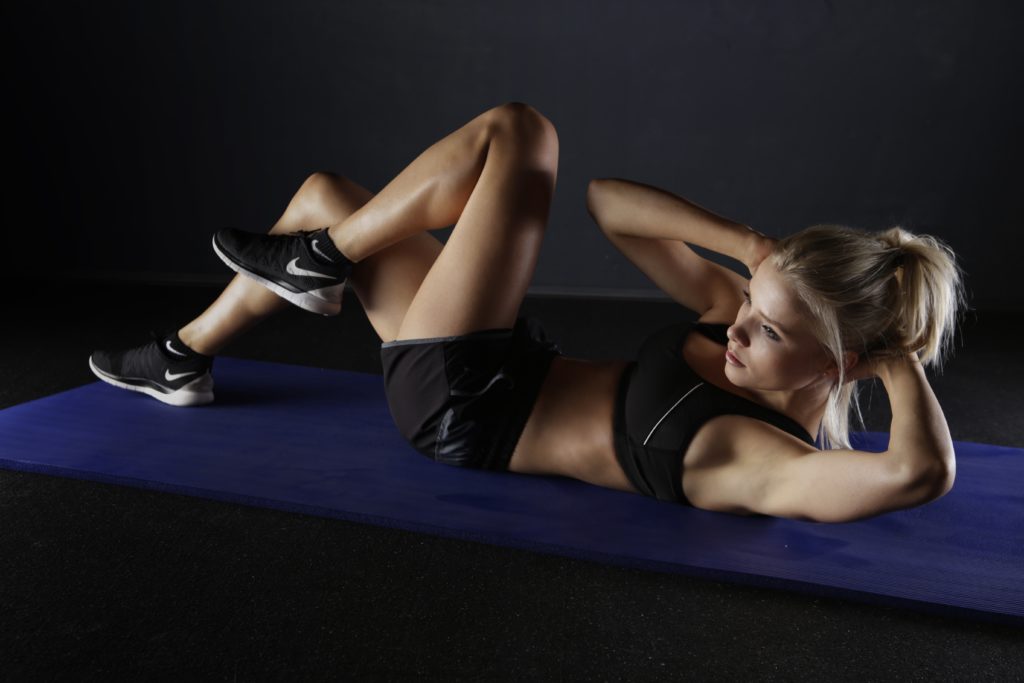Everything You Need to Know About High-Intensity Interval Training – HIIT Workouts
HIIT workouts get a lot of hype, but are they worth doing? Let’s break it down in this guide to high-intensity interval training.

Learn everything you need to know about HIIT workouts including benefits, who should do them, and what makes HIIT workouts so unique.
What are HIIT Workouts?
High-intensity interval training is distinguished from other workouts due to the intervals during the exercise. They are a type of workout routine that changes how hard you work throughout a session, alternating between intense exercise and low-intensity recovery.
In essence, high-intensity interval training involves working hard, resting a little bit, and working hard again. In a workout session, this may be 40 seconds of intense movements like jumping jacks, followed by 15 seconds of resting and simply breathing.
What makes this type of workout so appealing to many is that there are claims that high-intensity interval training burns a lot of calories, increases metabolism, and is very time-efficient. Supposedly, just 20 minutes of HIIT exercise is equivalent to 40 minutes of other types of workouts. Let’s see how true these claims are.
Benefits
There are, in fact, many benefits of high-intensity interval training, making them a great option to incorporate into your fitness journey. This type of exercise can help boost cardiovascular health, decreasing blood pressure and blood sugar. This leads to a reduction in metabolic syndrome, which is a condition that affects many biological processes.
However, these benefits can be said about other types of cardio. Many other forms of exercise help to prevent heart disease, increase fat loss, and boost the metabolism, so what is so different about HIIT workouts?
Why HIIT It
The interesting thing about high-intensity interval training is that while it helps to burn fat and improve metabolic health, it does something interesting to the respiratory system, affecting VO2 max.
VO2 max is the body’s ability to use oxygen during intense exercise. A better VO2 max means a better body that can work well during movement and cardio. High-intensity interval training can improve your VO2 max measurement. This means that your body is better able to deliver oxygen during a workout. An increase in VO2 max leads to an increase in performance, endurance, and stamina.
High-intensity interval training can also help you improve in other forms of cardio. For example, a better VO2 max can help you run farther faster without running out of breath as quickly. Plus, high-intensity interval training is very time-efficient. They can give you these benefits in just a short 20-minute workout.
HIIT and Weight Loss
An additional benefit is that HIIT workouts are great for weight loss or weight management. These workouts help you to burn more calories in less time. A review on high-intensity interval training found that it was just as effective as traditional moderately intense workouts. In this study, there seems to be data that contribute to the claim that a 20 to 30-minute HIIT workout is just as effective as a 50-minute regular workout routine.
High-intensity interval training pushes the body just enough for it to burn a lot of energy. Plus, the recovery time makes it so that your heart gets to slow down before it has to feed back up. These intervals of high intensity and recovery take more energy and oxygen, making these workouts unique and efficient.
Risks
Remember, too much of a good thing can be a bad thing, and that applies everywhere. If you do too many high-intensity workouts, your body may start to feel the toll. High-intensity workouts may lead to the body sort of freaking out, which can cause it to start accumulating and saving up energy. This happens because the body starts to worry about future energy sources if it is going to be undergoing such intense movement all the time. Check out this guide here to learn how to speed up your metabolism without harming your body.
Is High-Intensity Interval Training Right for You
High-intensity interval training is right for many people at many fitness levels. It is often utilized by high-performing athletes, but anyone can do it. Studies have found that people who have had heart disease, diabetes, obesity, and other illnesses can all perform high-intensity interval training routines. The intensity of these routines may vary from person to person.
There are versions of this workout that are more low impact and versions that are higher impact. If you have been sedentary, it’s recommended that you start with shorter routines or something that is lower impact before working your way up to more intense, longer routines.
Quick Tips and Habits for HIIT
Here are some super quick tips and habits that you can use to start doing high-intensity interval training.
- Start slow – try not to jump into high-intensity interval training if you are just starting to work out. Begin slow with maybe brisk walking before you start a more intense routine.
- Mind the rest – the purpose of high-intensity interval training is to work hard, and then recover. Do not skip the rest and recovery portions.
- Look up a routine – while you can always create your own routine, it’s very easy to look up a routine online. This makes it easy to follow along.
- Post-workout – try to have a post-workout routine in place that will help you recover faster. This includes eating protein, getting enough sleep, and stretching to avoid too much soreness.
The Takeaway
High-intensity interval training is an amazing addition to anyone’s fitness journey. The thing that makes it so unique is that it can raise VO2 max, which is a measurement of how well your body can deliver oxygen. VO2 max can even help you in other workouts such as running, swimming, or jogging. Try HIIT workouts today and watch how you start to feel better almost instantly.
Remember, health always comes from within. Start by eating nutritious food, moving your body, exercising when you can, and caring for your mental health. These small daily changes and habits that you start to cultivate become the foundation for a life full of wellness. Don’t forget about the health of your microbiome, too! Gut microbiota affects everything in your body, from the skin to muscles to the immune system and mental health. Get all the resources you need about microbiota health for free here!





